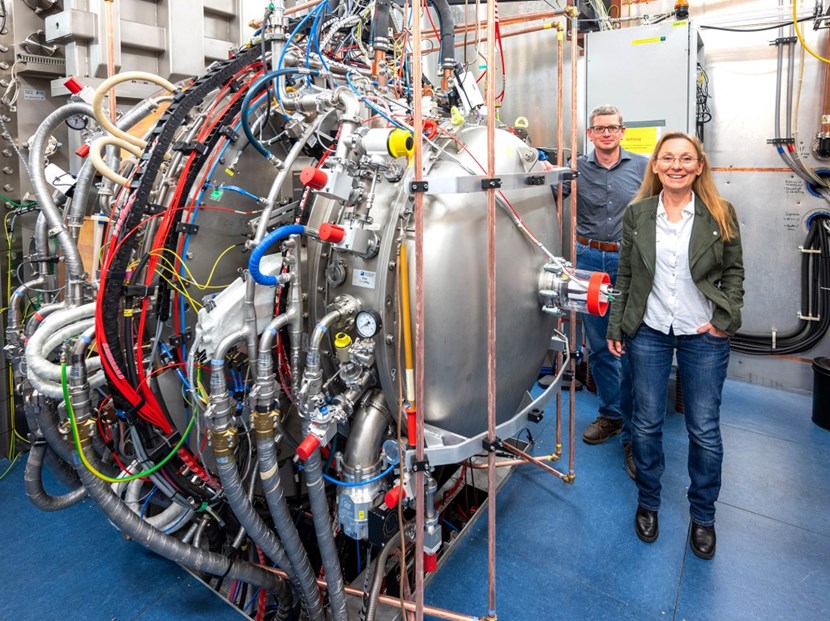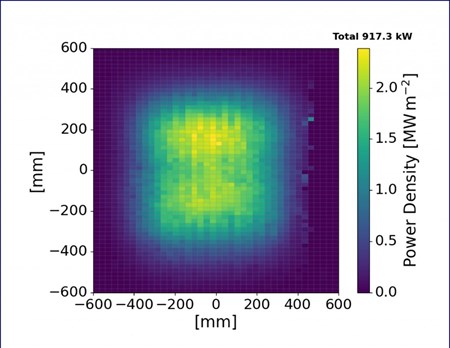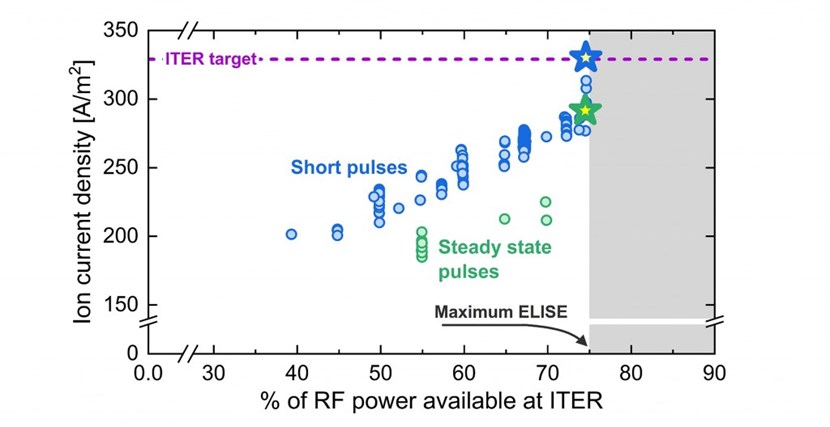ITER NEWSLINE
-
Neutral beam injection
ELISE achieves target values for ITER
James Zacks, Neutral Beam Testing Facility Scientist
Neutral beam injection | ELISE achieves target values for ITER
Researchers at the Max Planck Institute for Plasma Physics in Garching, Germany, have generated the ion current densities required for ITER neutral beam injection on the ELISE testbed—a negative ion source prototype that is half the size of ITER's. This experimental first is good news for the development of reliable, high-performance heating neutral beam injectors for ITER.

Dr Dirk Wünderlich and Prof Ursel Fantz at the IPP experimental testing facility ELISE in Garching. (Photo: MPI for Plasma Physics / Frank Fleschner)
The ITER heating neutral beams will play an essential role in providing power and current drive to the ITER plasma, allowing access to burning plasmas with high fusion power amplification factors. ITER will be equipped with two heating neutral beam injectors (with a provision of a third injector) and a neutral beam line for diagnostic purposes.

Image of the ELISE calorimeter taken with an infrared camera, measuring the energy content of the particle beams generated. The square cross-sectional area of the ion beam (1 x 1 metre) can be seen. The brighter the colour, the greater the incident power. ITER requires a homogeneity of 90% over the entire area, which was achieved in the ELISE experiments.
Research is ongoing at the ITER Neutral Beam Test Facility (NBTF) to develop the beam source and achieve the required parameters. One of the key parameters is the current density extracted through the multi-aperture, multi-grid accelerator system, with targets of 329 A/m2 when operating in hydrogen, and 286 A/m2 when operating in deuterium. This also needs to be stable throughout the ITER pulse.
The Max Planck Institute for Plasma Physics, in Garching, Germany, is the location of the ELISE (Extraction from a Large Ion Source Experiment) test stand, a key experiment in the development of the ITER neutral beam source, supporting the research of NBTF. ELISE has operated a half-size ITER beam source since 2013, allowing modifications and experience to be passed to the NBTF and finally to the ITER heating neutral beams.
Recent experiments at ELISE have focused on extending the pulse length for hydrogen beams, looking for a high but steady H- current, and stable and low co-extracted electron current. Caesium evaporation, the key technique, is used both to enhance the negative ion production and to reduce the co-extracted electron current to acceptable levels (< 0.5 x jH- with H, or < 1 x jD- with D). How to achieve the optimum caesiation distribution has been a topic of research for some time.
The experiments at ELISE have now produced the significant result of achieving the required current density in hydrogen for the first time (330 A/m2) over short pulses (<10 s), with nearly 90% of the target reached over a 600 s pulse.

Ion current densities from earlier hydrogen experiments in ELISE for stationary (green) and short (blue) beam pulses as a function of the normalized radiofrequency (RF) power available for the ITER neutral beam injection systems. The new world record results are represented by the large stars.
Negative ion current density is proportional to the radiofrequency power used to drive the source. However ELISE is only capable of delivering 75% of the value that will be available at ITER, making this achievement more impressive, and providing good confidence going forward for the NBTF and ITER heating neutral beams to deliver the required heating power needed for early deuterium-tritium operation and beyond.
See the press release issued by the Max Planck Institute for Plasma Physics in English or German.
return to the latest published articles









